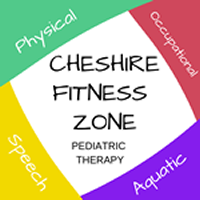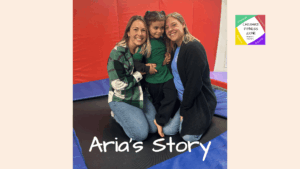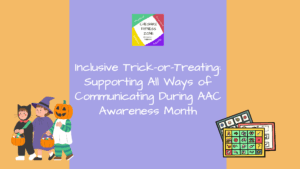Sensory Strategies for Kids: Help Your Child Have a More Comfortable Summer
Summer is full of fun, sun, and new experiences. For many families, it’s a season of swimming, vacations, playgrounds, and celebrations. But if your child has sensory sensitivities, these same moments can sometimes feel overwhelming instead of exciting.
What looks like a simple beach day or a backyard party can be packed with sensory input, bright sunlight, loud noises, unfamiliar textures, and changes in routine. And when your child’s sensory system becomes overloaded, it often shows up as frustration, withdrawal, or behaviors that seem out of the blue.
The good news is, with a little preparation and flexibility, it’s possible to support your child in ways that make summer feel more manageable and more enjoyable for everyone.
Creating comfort in noisy environments
Summer sounds can be intense. Fireworks, crowded pool areas, music at the park, buzzing bugs, or even distant thunderstorms might cause a child with sound sensitivities to become anxious or overwhelmed.
Planning ahead makes a big difference. If your child is sensitive to noise, pack headphones or ear defenders when you head out. If you’re attending an event where loud sounds are expected, talk through the plan beforehand so they know what to expect. Watching videos of fireworks or listening to sound clips at a low volume before the actual event can help some kids feel more prepared. And giving them a way to communicate when they need a break, even something as simple as pointing to their ear protection or squeezing your hand, can give them a sense of control.
Some families find that watching fireworks from a quiet car or choosing a less crowded park during off-hours allows their child to participate without becoming overstimulated. It’s not about missing out, it’s about finding the environment where your child can be successful.
Tip #1: Build a “preview plan” for busy or noisy environments
Talk about what your child might see, hear, or smell at an event. Use pictures or videos to explore a location before visiting. Practice with similar, smaller activities first (like backyard sparklers before a full fireworks show) so the big moment doesn’t feel so overwhelming.
Navigating sensory discomfort from textures
Summer brings all sorts of new sensations including the stickiness of sunscreen, the grit of sand, damp swimsuits, barefeet, and lightweight clothing that may not feel as secure as winter layers.
If your child is hesitant about certain textures, offer options and build familiarity gradually. Water shoes might help with hot sand or unexpected grass. Spray or stick sunscreens may feel less uncomfortable than lotion. Letting your child apply it themselves or using a soft brush can also make a difference.
At home, you might introduce summer textures slowly through play. A sensory bin with kinetic sand or damp towels can provide opportunities to explore without pressure. Let them take the lead, even if they only watch at first, observation is part of learning.
Children who are particular about clothing might prefer tagless shirts, snug-fitting swimwear, or fabrics that feel more structured. Having a consistent “go-to” summer outfit that feels safe and predictable can offer comfort in unfamiliar environments.
Supporting transitions and changes in routine
During the school year, many kids rely on consistent schedules. In summer, things tend to be more flexible, which is great for spontaneity but harder for kids who thrive on routine.
Visual reminders, like a daily schedule on a whiteboard or simple drawings of the day’s activities, can make the day feel more predictable. If you’re heading somewhere new, talk about what the day will look like and walk through what they might see, hear, or feel.
Even predictable transitions, like leaving the pool or finishing a picnic, can be tough if your child is in the middle of something they love. A five-minute heads-up, paired with a choice (“Would you like to leave after one more swing or two?”), helps prepare them for what’s next while giving them a sense of control.
Tip #2: Use “first/then” language to support transitions
Try saying, “First we go to the splash pad, then we’ll have a snack.” This simple phrasing helps kids understand what’s coming next and can make transitions feel more predictable, especially when the first activity is preferred and the second one is comforting or familiar.
Exploring new foods at summer meals
Cookouts, picnics, and vacations often mean new foods, unfamiliar smells, and different routines at mealtimes. For kids who are sensitive to taste, texture, or smell, this can be overwhelming.
You don’t need to push your child to eat new foods right away. Let them interact with food in other ways , helping prep food and fruit, smelling a new side dish, or arranging items on a plate. Keep favorite “safe foods” available so they always have something familiar nearby.
A child might not be ready to eat grilled vegetables or fresh fruit salad, but letting them help stir or serve can still be a win. That kind of low-pressure exposure builds comfort and curiosity over time.
Tip #3: Use food play to build comfort
If your child is hesitant to try new foods, start by encouraging interaction without the expectation to eat. Let them explore by touching, smelling, or helping prepare the food. Try activities like making faces with fruit slices, using cookie cutters to shape sandwiches, or creating “taste test” games with familiar textures. Exposure without pressure helps build trust and curiosity over time.
Helping your child feel confident this summer
Supporting your child through summer doesn’t mean changing who they are, it means giving them what they need to feel successful in their own way. With small adjustments, thoughtful planning, and a bit of patience, summer can become a season your child feels good in. Whether they’re jumping into new experiences or easing into them slowly, every step forward counts.



